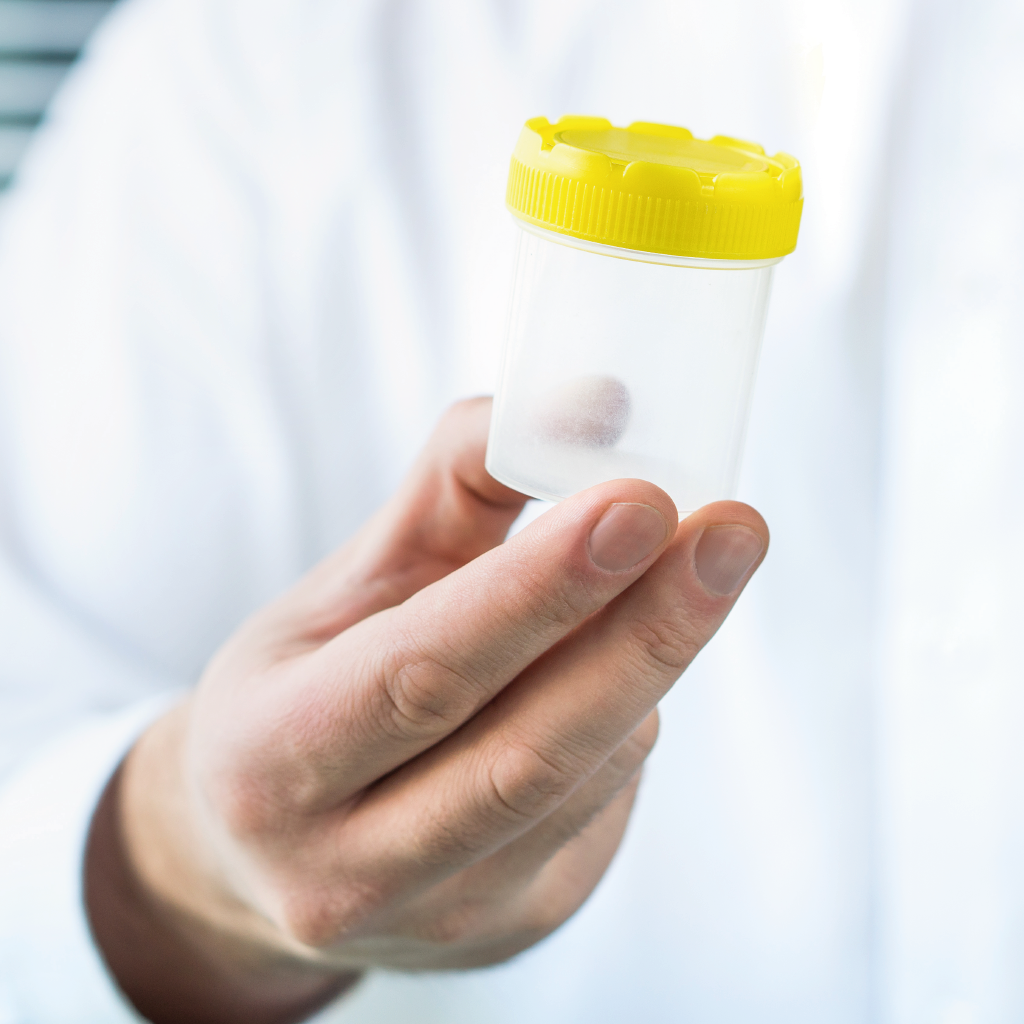Spermiogram: what is it and when to do it

Publication date: 22-05-2022
Updated on: 14-02-2023
Topic: Urology
Estimated reading time: 1 min
Article Author
Carolina Cappello
Medical Editor
Andrea Salonia
Editor and Translator
Viktoryia LuhakovaSpermiogram is the first test that men can undergo to check their reproductive health. It is a diagnostic test that aims to analyze seminal fluid to evaluate the quality of the spermatozoa, their number, shape, and motility.
Although most of the time men resort to this test only in case of fertility problems in the couple, the spermiogram should be considered a routine examination to evaluate and preserve not only fertility, but health in general.
Thanks to research in the urological field, we know that the total lack or reduced presence of sperm is also a predictor of the onset of cardiovascular, metabolic and cancer diseases. Taking care of male reproductive health, which begins with an analysis of the seminal fluid, is essential and should start from a young age.
Preparation
As suggested by the World Health Organization, for the spermiogram to give reliable results it is necessary to prepare correctly:
- sexual abstinence for 2-5 days before the exam;
- suspension of any drug therapies (antibiotics and anti-inflammatory drugs) for a suitable time before harvesting;
- collection of the sample in a sterile container, without any loss of material (most of the sperm is emitted in the first part of the ejaculate);
- delivery of material immediately after collection, within 1 hour (making sure that it has not undergone temperature changes).
Seminal fluid is very sensitive to various external factors, therefore if anomalies appear, it is recommended to repeat the examination once again.
What parameters are evaluated
Once the sample has been taken, various components and characteristics of the seminal fluid will be analyzed in the laboratory, with the aim of giving a general picture of fertility and male health. The initial analysis is macroscopic, which examines:
- volume: the normal level is between 1.5 and 5 ml;
- color;
- fluidization;
- viscosity.
- A microscopic analysis, on the other hand, allows for more detailed information on the cellular component, that is, on the individual characteristics of the sperm:
- sperm concentration (sperm density or count): a normal level is considered to be above 15 million spermatozoa per 1 ml. In the case of lower values we speak of oligospermia or, in the total absence of spermatozoa, of azoospermia;
- sperm mobility: at least 32% should have normal mobility, if this does not happen we are talking about asthenospermia;
- morphology of spermatozoa: teratozoospermia is defined as the presence of more than 96% of abnormally shaped spermatozoa.
When to do spermiogram
As it was said, men generally decide to carry out a spermiogram only in conjunction with the onset of uro-genital disorders or in the face of couple fertility problems.
Male infertility
"In recent years we have seen an increase in fertility problems in couples: about 1 in 10 fails to conceive within a year. In half of the cases the problem is male health and the insufficient number or/and poor quality of spermatozoa”, explains professor Andrea Salonia, director of the Urological Research Institute (URI) of San Raffaele Research Hospital and full professor of Urology at the University Vita-Salute San Raffaele.
Thanks to numerous research in the urological field, it is confirmed that these numbers are destined to grow and that any alterations in the seminal fluid are often already present in young or very young males.
“It is essential for the spermiogram to become a routine examination from late adolescence and not only when one would like to conceive,” concludes the expert.
Importance of prevention for male health
Diagnosing this type of problem in a timely manner could make the difference in protecting men's health, identifying a personalized monitoring and assistance path over time.
Monitoring one's uro-genital health is also essential to prevent other types of diseases, such as:
- hypertension;
- heart attack;
- diabetes;
- obesity;
- testicular tumors.
“Having low or no sperm counts is associated with a greater risk of developing chronic diseases that are normally related to advancing age. Given the general implications on male health and the latest data on the growing prevalence of couples with infertility problems, it is important to be increasingly aware that prevention in the uro-andrological field must start from an early age”, concludes professor Salonia.